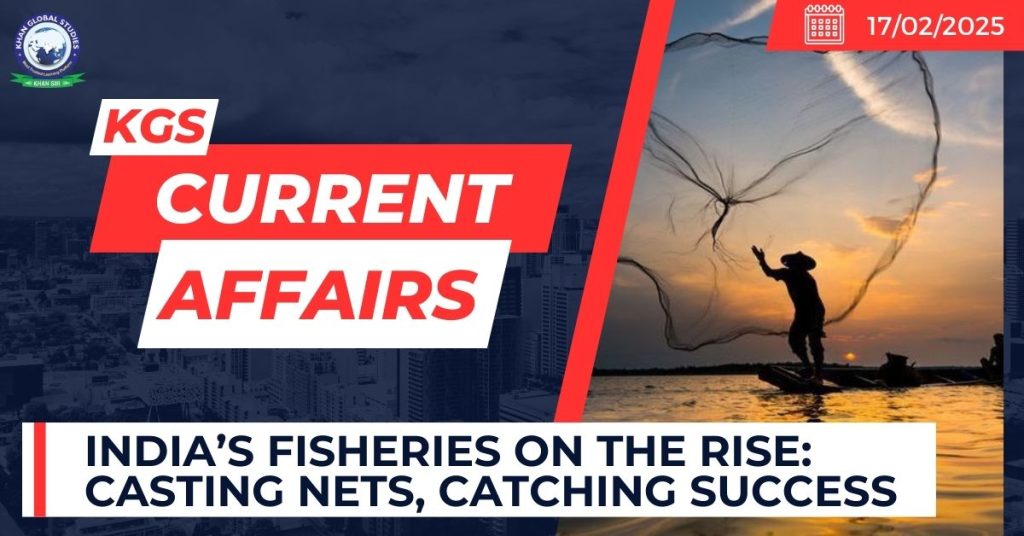Context: The 2025-26 budget focuses on financial inclusion, easing farmers’ financial burden through reduced duties, and promoting marine fisheries development.

- India is the second largest fish producer (After China), with an 8% global share from 2004 to 2024, the fisheries sector saw significant growth, marked by advancements and reforms.
- The Union Budget 2025-26 proposed a record Rs. 2,703.67 crores for the sector.
- The Budget emphasizes creating a framework for the sustainable exploitation of fisheries in the Exclusive Economic Zone (EEZ) and High Seas, with a special focus on Lakshadweep and the Andaman & Nicobar Islands.
- It will unlock the untapped potential of marine fish resources in India’s EEZ and adjacent High Seas, driving growth in the marine sector.
Policy Initiatives and Schemes
- The Blue Revolution, launched in FY 2015-16 with Rs. 3000 crores, aimed to boost fisheries production through aquaculture and marine resources.
- Pradhan Mantri Matsya Sampada Yojana (PMMSY) was introduced in 2020 to address value chain gaps and ensure socio-economic welfare of fishers and farmers.
- PMMSY, with an investment of Rs. 20,050 crores, focuses on inland fisheries and aquaculture to enhance production and food security.
- PMMSY Initiatives:
- Fish Farmers Producer Organisations (FFPOs): 2195 FFPOs approved with a total cost of Rs. 544.85 crore. Kisan Credit Card (KCC) facility extended, with 4,50,799 cards sanctioned.
- Fisheries and Aquaculture Infrastructure Development Fund (FIDF): Created in 2018 with Rs. 7522.48 crore to develop fisheries infrastructure. 136 projects approved with Rs. 5801.06 crore in costs.
- Pradhan Mantri Matsya Kisan Samridhi Sah-Yojana (PMMKSSY): A Rs. 6000 crore schemes for financial and technological interventions, aiming for long-term fisheries sector transformation (2023-2027).
- Integrated Aqua Parks: 11 integrated aquaparks approved under PMMSY with a total cost of Rs. 682.6 crore to boost the aquaculture value chain.
- Artificial Reefs: 937 artificial reefs approved at Rs. 291.37 crore to support marine fisheries and enhance biodiversity in coastal regions.
- Nucleus Breeding Centres (NBCs): Designated NBCs to improve the genetic quality of aquaculture species, particularly shrimp, to boost productivity and quality.
- India’s sustainable fishing efforts:
- National Policy on Marine Fisheries (NPMF, 2017): Focuses on sustainability in managing marine fisheries resources.
- Regulation and Conservation Measures:
- Uniform Fishing Ban: A 61-day ban during the monsoon to help fish stocks replenish.
- Prohibition of Destructive Fishing: Bans on pair trawling, bull trawling, and artificial LED lights to reduce overfishing and ecosystem damage.
- Promotion of Sustainable Practices: Encourages Sea ranching, artificial reefs, and mariculture like seaweed cultivation.
- State/UT Fisheries Regulations: Coastal regions regulate gear size, engine power, minimum fish size, and zonation of fishing areas to support sustainability.

